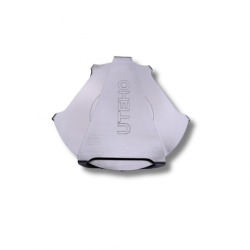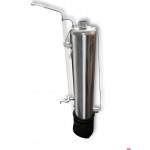
Why Do Jar Lids Bulge After Autoclaving and How to Prevent It?
How Does an Autoclave Work?
Why Do Lids Bulge?
.png)
Lids and Accessories for Autoclaving:
Watch the Video:
Why Do Jar Lids Bulge After Autoclaving?
Preparing homemade preserves in jars using an autoclave is a reliable method of preserving food, ensuring long-term storage. However, even when following all instructions, we can end up with the unpleasant sight of bulging lids on jars. This situation raises doubts about the quality and safety of the preserved products. In this article, we will discuss the main reasons why lids bulge during autoclaving and share practical and effective tips on how to avoid this.
Types of Bulging Lids
- Bulging lids immediately after autoclaving
- Bulging lids during storage
It is important to distinguish between these two cases, as the reasons for the problem differ, and thus the solutions are also different.
Type One: Bulging Lids Immediately After Autoclaving
.png)
Type One. Cause 1 - Temperature of Water and Products.
.png)
Type One. Cause 2 - Non-Hermetic Autoclave.
.png)
Type One. Cause 3 - Overfilled Jars.
.png)
Type One. Cause 4 - Improper Air Release.
.png)
Type One. Cause 5 - Low-Quality Lids.
.png)
Type Two: Bulging Lids During Storage
.png)
Type Two: Cause 1 - Poor Quality Products.
.png)
Second Type: Reason 2 - Inadequate Autoclaving.
.png)
Avoid Autoclaving Problems by Following Our Tips!
Carefully follow the autoclaving instructions, including temperature regimes, sterilization times, and storage rules for finished preserves. Additionally, do not skimp on lids; to prevent bulging and ensure long-term storage, use lids that are specifically designed for autoclaving.
22.08.2024

Uteho
Don't forget to subscribe to our channel so you don't miss new interesting videos, get useful autoclaving tips, and discover exciting recipes for the autoclave!









-250x250.webp)




